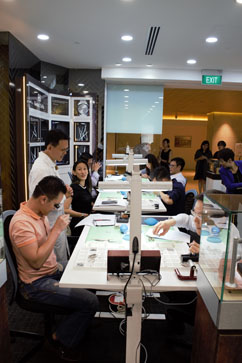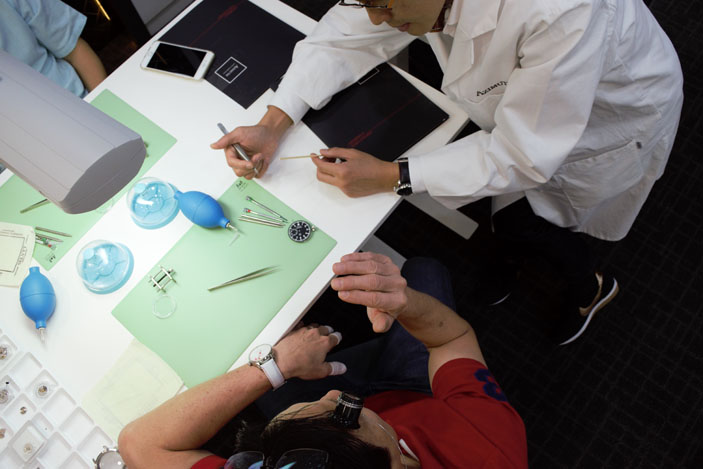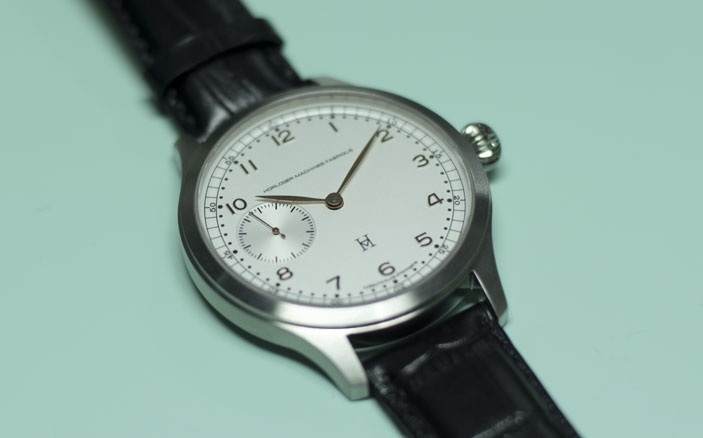BACK when Singapore was finding its footing in the world, the unquenchable desire for consumer products was the fuel to feed a thirsty nation.
Luxury goods were snapped up by the newly rich, especially timepieces, since the right brand on your wrist was a good way of announcing your standing.
Over time, with the advent of smartphones and smart watches, watches have taken on a new role. It’s not essential for telling time anymore — you can grab the time in so many places — but it’s still a status symbol, whether you sport a conventional Rolex or Omega, or prefer an avantgarde MB&F or Azimuth.
Dodging Disruptions
Despite the constant disruption to the watch industry — The Swiss industry was almost wiped out by the quartz movement — it continues to tick on, and this part of the world is important to it.
“The watch trade is an old trade here, at a retailer level,” says Christopher Long, the principal designer and co-founder of Azimuth Watches.
While the sale of new watches continues unabated and with an increasing number of players, Long feels the after sales has not been emphasized enough.
Long, whose creativity can be seen in Azimuth’s unusual timepieces like the Twin Turbo, Roboto, Casino and Crazy Rider models, enjoys the creativity that comes from freedom from bureaucratic stipulations. But he is only able to do that from having plunged into watch making and appreciating the intricacies of design.
Towards this end, he wants to share his knowledge and experience with other watch enthusiasts who want to get to know their collections to a deeper extent.
A Deeper Interest In Watches
The Horloger Machines Fabrique (HMF) programme allows those keen on interacting more with their watches to get a better understanding of what goes into its creation.
 “It’s an opportunity to understand what makes your watch tick, and to appreciate the level of craftsmanship involved,” Long says.
“It’s an opportunity to understand what makes your watch tick, and to appreciate the level of craftsmanship involved,” Long says.
He hopes programmes like HMF will drive up interest in the watch industry beyond the glitzy retail front.
“There is a lack of expertise and manpower to service watches. I estimate Singapore has around 50 watch technicians, which is why it takes anywhere from three to six months to get a watch serviced.
“Instead of repairing air-cons or cars, youngsters can train to repair watches. They will make more money and they will be dealing with luxury products.”
When Long brought this matter up to the authorities, it was met with some enthusiasm but was deemed unsustainable. In their calculations, the authorities reckoned there would be a surplus of talent, and decided to drop the idea.
Given the number of watches — of all price points — purchased here, there will always be watches to be fixed and this could potentially become a secondary industry that could have wider reach.
To participate in the HMF, contact chrislong@azimuthwatch.com
Long’s Watch Etiquette Shortlist:
- Don’t drop it. If you do, have it serviced in case something has been dislodged.
- After use, wipe the back with a damp tissue to remove perspiration that would otherwise seep in and corrode the housing.
- Service your watch every five years to ensure it’s well lubricated and in good working order.
- Avoid keeping it near your handphone or computer as it would cause the watch to become magnetized and gain time.
- Don’t place it in the car in the sun. It’s not just babies and pets that get cooked in the heat.
You Might Also Like To Read
Bring Out The Watchmaker Within With HMF
Azimuth Powers Up The Twin Turbo























